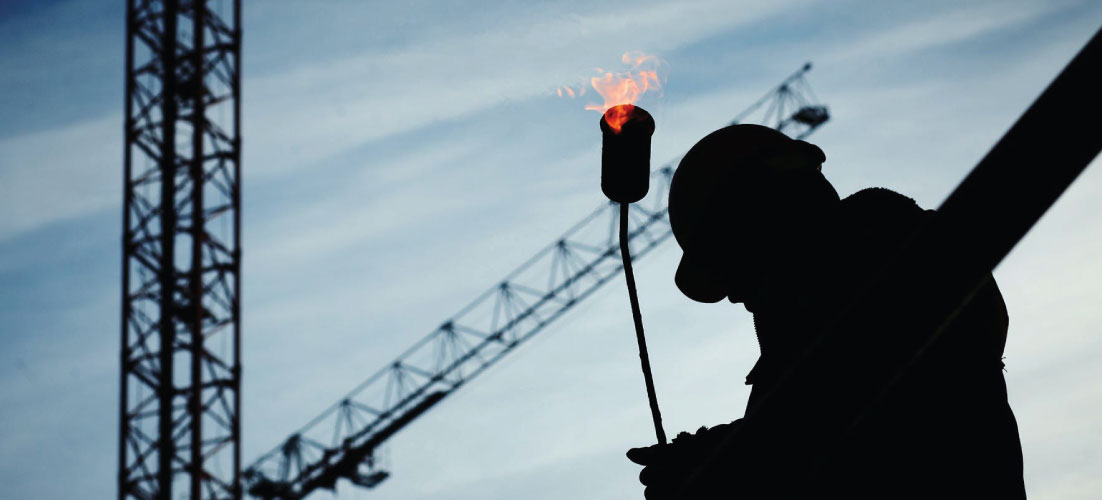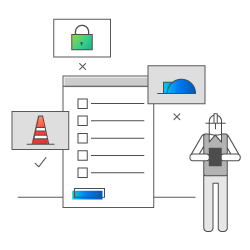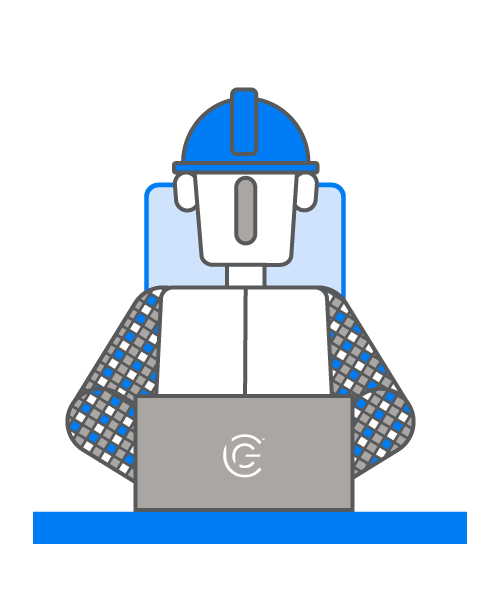- SOLUTIONS
- ENGAGING THE WORKFORCE
- HAZARD ASSESSMENT
- OBSERVATIONS & EVENTS
- INSPECTIONS
- TOOLBOX TALKS
- ELEARNING
- OTHER SOLUTIONS
- FIELD ID
- LOCKOUT & TAGOUT
- INTEGRATIONS
- AUDITS & INSPECTIONS
- Close
- INDUSTRIES
- Infrastructure – https://www.ecompliance.com/wp-content/uploads/2017/10/MEGA_NAV_INFRASTRUCTURE.jpg
- Utilities – https://www.ecompliance.com/wp-content/uploads/2017/10/MEGA_NAV_UTILITIES.jpg
- Energy – https://www.ecompliance.com/wp-content/uploads/2017/10/MEGA_NAV_ENERGY.jpg
- Construction – https://www.ecompliance.com/wp-content/uploads/2017/10/MEGA_NAV_CONSTRUCTION.jpg
- Manufacturing – https://www.ecompliance.com/wp-content/uploads/2017/10/MEGA_NAV_MANUFACTURING.jpg
- Mining – https://www.ecompliance.com/wp-content/uploads/2017/10/MEGA_NAV_MINING.jpg
- Close
- COMPANY
- PRICING
- BLOG

SAFETY NERD INSIDER | SEPTEMBER 2020
Keeping You Prepared
Find out more about the resources we’ve created to keep you safe and how we’re constantly improving our software to meet your needs…
FEATURED THIS MONTH:

Thought Leadership
Featured Resource

Product
Updates

Customer Showcase

Support
Tips
FEATURED THIS MONTH:
eC Insider
Jump to Section →
Thought Leadership
Jump to Section →
Featured Resource
Jump to Section →
Product Updates
Jump to Section →
Customer Showcase
Jump to Section →
Support Tips
Jump to Section →
eC Insider
Our Helping Hand to the Community
Learn about our Post-Hurricane Recovery Checklists, created to help those impacted by the hurricanes in the United States, from our very own Associate Product Manager Keenan Horne.
Thought Leadership
As safety leaders, it’s our job to shield team members from danger at all costs. Whether it’s a fire or storm in the distance, we must always be taking proactive steps to ensure everyone’s safety. That’s why National Preparedness Month is so important, to help us think ahead and stay prepared for anything and everything. What steps can you start taking as we approach 2021?
With so much to consider, we know it can be tough to manage it all. Here are some tips to help you stay ready to rise to the challenge:
- Make sure that your organization has an up-to-date emergency plan in place. This plan should outline the necessary procedures for handling unexpected situations.
- Band together with your team to find solutions to any unexpected difficulties that may arise by completing a risk assessment to identify any technological or natural hazards your organization could be exposed to.
- Ensure that your employees understand the roles, expectations and responsibilities outlined in your plan. Safety drills should be conducted on a consistent basis and can be used to determine any vulnerabilities within your plans.
- Assemble the appropriate emergency supplies which can help minimize the dangers that workers may encounter during an emergency.
- Open the floor for feedback and suggestions from all team members to better focus on problem-areas that need to be improved or enhanced.
- If you already have an existing emergency plan, make sure that is reviewed on a regular basis. Changes in plant infrastructure, processes, materials used, and key personnel are occasions for updating the plan.
- Reach out to your Customer Success Coach for any and all of your concerns to help you stay prepared. Our team is always here to support you, no matter the circumstance!
Stay safe out there!
eC Insider
Our Helping Hand to the Community
Learn about our Post-Hurricane Recovery Checklists, created to help those impacted by the hurricanes in the United States, from our very own Associate Product Manager Keenan Horne.
Thought Leadership
As safety leaders, it’s our job to shield team members from danger at all costs. Whether it’s a fire or storm in the distance, we must always be taking proactive steps to ensure everyone’s safety. That’s why National Preparedness Month is so important, to help us think ahead and stay prepared for anything and everything. What steps can you start taking as we approach 2021?
With so much to consider, we know it can be tough to manage it all. Here are some tips to help you stay ready to rise to the challenge:
- Make sure that your organization has an up-to-date emergency plan in place. This plan should outline the necessary procedures for handling unexpected situations.
- Band together with your team to find solutions to any unexpected difficulties that may arise by completing a risk assessment to identify any technological or natural hazards your organization could be exposed to.
- Ensure that your employees understand the roles, expectations and responsibilities outlined in your plan. Safety drills should be conducted on a consistent basis and can be used to determine any vulnerabilities within your plans.
- Assemble the appropriate emergency supplies which can help minimize the dangers that workers may encounter during an emergency to prepare emergency kits for you team.
- Open the floor for feedback and suggestions from all team members to better focus on problem-areas that need to be improved or enhanced.
- If you already have an existing emergency plan, make sure that is reviewed on a regular basis. Changes in plant infrastructure, processes, materials used, and key personnel are occasions for updating the plan.
- Reach out to your Customer Success Coach for any and all of your concerns to help you stay prepared. Our team is always here to support you, no matter the circumstance!
Stay safe out there!
Featured Resource

Dive Deeper into Our New Post-Hurricane Recovery Checklists
Browse through both the Business and Home edition of our new Post-Hurricane Recovery Checklists to help stay aware of all essential factors you must take into consideration when recovering from a hurricane. Now available to be added to your eCompliance account. Keep in mind these checklists can be adapted to help manage other emergency situations.
View Resource →
Product Updates
A Special Message From Our Product Team
We are taking some time to assess, review, and address your amazing feedback on the eCompliance 7 and Field iD 4.0 apps!
As always we are committed to delivering the best experience possible for you and we really appreciate your suggestions for improvements.
We love hearing about your experiences and feedback with our products, so please continue to reach out to our Support Team or your Customer Success Coach and let us know so that we can make sure we’re on the same page!
Customer Showcase
Brought to You by One of Our Safety Champions at Marek Brothers Systems, Inc.
Top Tips to Prepare for Hurricane Season
We often learn most from experience and practice; however, dealing with a hurricane is not the type of situation you want to learn from. It is one you always want to be prepared for. Jorge Vazquez, Safety Director at Marek Brothers Systems, Inc. based in Houston, Texas provided his top tips to prepare for hurricane season.
1. Have a Plan
To avoid being caught unprepared, the first thing you need to have is a plan that covers the before, during, and after. At Marek they have an Emergency Preparedness Plan which can be deployed for many crisis scenarios – a hurricane being the most common that occurs for them. When a warning is announced, there are many questions around the impact to the business, employees, and customers that need to be reviewed and answered ahead of time to set in motion the relevant plays:
- Do we return rented equipment?
- Do we cancel any orders on materials?
- How do we respond to the customers who are expecting things to be completed by a schedule?
- How do we shutdown and secure the job site safely?
In the lead up to Hurricane Laura, Marek’s number one priority was the safety of their employees – “because of the news …we took the precautions to send the employees home the day it was supposed to arrive” to ensure they were not being put at risk unnecessarily. The job site was secured following the Emergency Response procedure, including image and video evidence to show the results and protect against claims should anything happen to the equipment and site when it is left vulnerable. For additional actions to take, review Marek’s ‘Safe Before The Storm’ article written by Jorge on their website.
Having a plan ensures you have all bases covered and that your response time will improve each time it is put into practice until it “becomes second nature”.
2. Have a Safety Committee
In Houston, Texas, Jorge states it is common to encounter a hurricane once a year or every two years if they are lucky. Being in an area of such high risk requires a strong level of commitment to face these challenges successfully – this is where the Safety Committee comes in. Marek’s Safety Committee is a designated resource group that is focused on the safety of the workers and their families, as well as helping the business continue. At Marek, they introduced task force groups to help those whose houses had flooded, “ensuring they feel their families are safe and they can return to work”. They also had a questionnaire that their employees would complete if they were heavily affected by the hurricane and “the committee would review every case and either issue money or resources to help the employee come back to work”. They are currently developing a training that will be available for employees during hurricane season that will cover CPR, First Aid, how to operate a generator, and other basic survival skills.
3. Have a Communication Strategy
Last, but certainly not least, is having a strong and clear communication strategy that reaches all employees and customers. Jorge explained that their plan consists of “steps to deal with the social platforms, website, and intranet to communicate with the employees in different ways” while also “relying on text messages” in case there are power outages. They are set up to provide communication effectively through multiple channels from the first alert, providing the company response and position, through to returning to work. It is important to keep the communication relevant and focused to avoid the risk of messages being lost.
“We can have a great plan, but if we don’t have a way to validate contact information, we’re going to struggle,” says Jorge.
One of the main lessons learned from Hurricane Harvey in 2017 was knowing if the employee contact details were up to date. Since then, Marek has introduced a system that will prompt employees to validate and provide the opportunity to update their contact details on a regular basis. Jorge recounts “we had a list of things to do and what communication needs to go out. What we learned was we needed to have a way to update contact information from the employees” otherwise the plan cannot be executed.
If you need help getting prepared or started with your own preparedness plan, check out our Hurricane Response Checklists for business and home which can be adapted for other emergency situations, as well as our support article to get this set up on your eCompliance account today.
Featured Resource
Dive Deeper Into Our New Post-Hurricane Recovery Checklists
Browse through both the Business and Home edition of our new Post-Hurricane Recovery Checklists to help stay aware of all essential factors you must take into consideration when recovering from a hurricane. Now available to be added to your eCompliance account. Keep in mind these checklists can also be adapted to help manage other emergency situations.
View Resource→
Product Updates
A Special Message From Our Product Team
We are taking some time to assess, review, and address your amazing feedback on the eCompliance 7 and Field iD 4.0 apps!
As always, we are committed to delivering the best experience possible for you and we really appreciate your suggestions for improvements.
We love hearing about your experiences and feedback with our products, so please continue to reach out to our Support Team or your Customer Success Coach and let us know so that we can make sure we’re on the same page!
Customer Showcase
Brought to You by One of Our Safety Champions at Marek Brothers Systems, Inc.
Top Tips to Prepare for Hurricane Season
We often learn most from experience and practice; however, dealing with a hurricane is not the type of situation you want to learn from. It is one you always want to be prepared for. Jorge Vazquez, Safety Director at Marek Brothers Systems, Inc. based in Houston, Texas provided his top tips to prepare for hurricane season.
1. Have a Plan
To avoid being caught unprepared, the first thing you need to have is a plan that covers the before, during, and after. At Marek they have an Emergency Preparedness Plan which can be deployed for many crisis scenarios – a hurricane being the most common that occurs for them. When a warning is announced, there are many questions around the impact to the business, employees, and customers that need to be reviewed and answered ahead of time to set in motion the relevant plays:
- Do we return rented equipment?
- Do we cancel any orders on materials?
- How do we respond to the customers who are expecting things to be completed by a schedule?
- How do we shutdown and secure the job site safely?
In the lead up to Hurricane Laura, Marek’s number one priority was the safety of their employees – “because of the news …we took the precautions to send the employees home the day it was supposed to arrive” to ensure they were not being put at risk unnecessarily. The job site was secured following the Emergency Response procedure, including image and video evidence to show the results and protect against claims should anything happen to the equipment and site when it is left vulnerable. For additional actions to take, review Marek’s ‘Safe Before The Storm’ article written by Jorge on their website.
Having a plan ensures you have all bases covered and that your response time will improve each time it is put into practice until it “becomes second nature”.
2. Have a Safety Committee
In Houston, Texas, Jorge states it is common to encounter a hurricane once a year or every two years if they are lucky. Being in an area of such high risk requires a strong level of commitment to face these challenges successfully – this is where the Safety Committee comes in. Marek’s Safety Committee is a designated resource group that is focused on the safety of the workers and their families, as well as helping the business continue. At Marek, they introduced task force groups to help those whose houses had flooded, “ensuring they feel their families are safe and they can return to work”. They also had a questionnaire that their employees would complete if they were heavily affected by the hurricane and “the committee would review every case and either issue money or resources to help the employee come back to work”. They are currently developing a training that will be available for employees during hurricane season that will cover CPR, First Aid, how to operate a generator, and other basic survival skills.
3. Have a Communication Strategy
Last, but certainly not least, is having a strong and clear communication strategy that reaches all employees and customers. Jorge explained that their plan consists of “steps to deal with the social platforms, website, and intranet to communicate with the employees in different ways” while also “relying on text messages” in case there are power outages. They are set up to provide communication effectively through multiple channels from the first alert, providing the company response and position, through to returning to work. It is important to keep the communication relevant and focused to avoid the risk of messages being lost.
“We can have a great plan, but if we don’t have a way to validate contact information, we’re going to struggle,” says Jorge.
One of the main lessons learned from Hurricane Harvey in 2017 was knowing if the employee contact details were up to date. Since then, Marek has introduced a system that will prompt employees to validate and provide the opportunity to update their contact details on a regular basis. Jorge recounts “we had a list of things to do and what communication needs to go out. What we learned was we needed to have a way to update contact information from the employees” otherwise the plan cannot be executed.
If you need help getting prepared or started with your own preparedness plan, check out our Hurricane Response Checklists for business and home which can be adapted for other emergency situations, as well as our support article to get this set up on your eCompliance account today.
Support Tips
FEATURED SUPPORT TIP FOR SEPTEMBER
How to Add the Post-Hurricane Assessment Checklists to my Organization
View Tip →
Support Tips
FEATURED SUPPORT TIP FOR SEPTEMBER
How to Add the Post-Hurricane Assessment Checklists to my Organization
View Tip →


